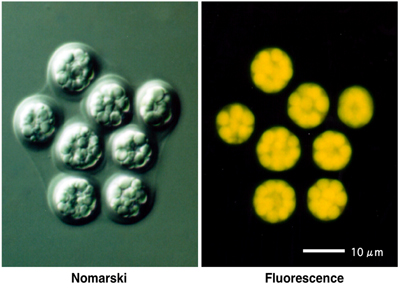These common marine microorganisms with the tongue-twisting name behave like fungi in the ocean ecosystem but are actually protists. Their abundance in the ocean varies with the changing seasons. They feed on non-living organic matter such as decaying algae, plants such as mangrove leaves and salt marsh grass or even animal tissues. Species that belong to the Labyrinthulomycete category all fall under a larger category of protists that also includes diatoms and brown algae.
Labyrinthulomycetes help break down organic matter in the waters, and some species can also break down crude oil and tarballs. Researchers believe they also “upgrade” the quality of the debris that feed other marine organisms by adding nutrients. Long chain fatty acids produced by Labyrinthulomycetes have already been included in human food supplements.
Sequencing the genomes of several Labyrinthulomycete species is expected to give ocean scientists and microbiologists more information about the microorganisms’ roles in the carbon cycle and other biogeochemical cycles. The genomes to be sequenced in this project fall into three different categories: thraustochytrids, which are very important to decomposing terrestrial plant debris, aplanochytrids, which were recently recognized as a major group in marine systems and labyrinthulids, which are usually associated with living plants and algae since they seem to have a higher tolerance for antimicrobial compounds than other Labyrinthulomycete species.

Composite of the same Aurantiochytrium limacinum cell seen through Nomarski view (left) and fluorescence view (left)
Aurantiochytrium limacinum photo courtesy Daisuke Honda, Konan University
Principal Investigators: Jackie Collier, Stony Brook University
Program: CSP 2010